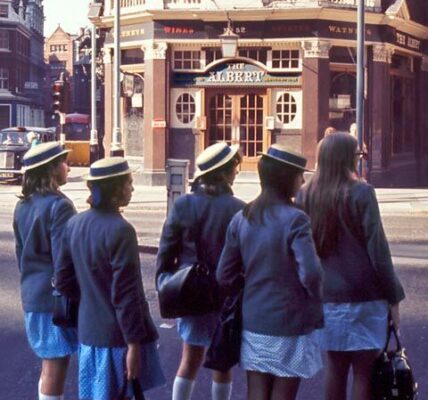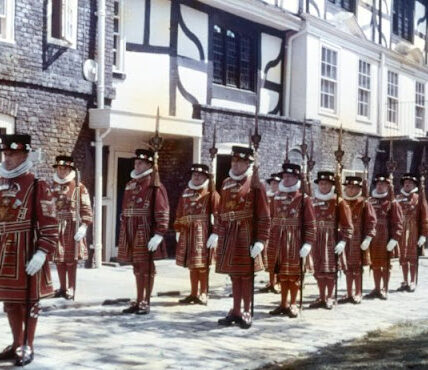These color photos of London, spanning from the dark days of the Blitz to the triumphant celebrations of VE Day, were taken in Dufaycolor, a little-known photography process. They give another perspective on the period between 1943 and 1945 when Nazi Germany carried out a sustained aerial bombing campaign against Britain.
Introduced as cinematic film in 1932 and roll film in 1935, Dufaycolor was based on a four-color screen process developed by French chemist Louis Dufay. It was one of the last additive color processes to be marketed, consisting of a fine screen of red, green and blue filter lines printed over a film emulsion.
Though it was popular among professional and amateur photographers until the 1950s, Dufaycolor was ultimately surpassed by Kodachrome and other superior color processes.
 Advertisement
|
| Bomb damage to a London street. Dec. 16, 1943. |

|
| St. Paul’s cathedral stands intact amid buildings destroyed by bombing. Dec. 10, 1943. |
 |
| The Old Bailey law courts, damaged by German bombing. Dec. 10, 1941. |
 |
| Houses destroyed by German bombing. 1943. |
 |
| Allied flags are displayed in celebration of victory in Europe. Sept. 3, 1945. |
 |
| The Admiralty Arch is decorated with Allied flags in celebration of VE Day. Sept. 3, 1945. |
 |
| Crowds on The Mall, London, 1945. |
 |
| Sept. 3, 1945. |
 |
| The Mall, London, 1945. |
 |
| Admiralty Arch, London, 1945. |
 |
| The Palm House in Kew Gardens. Sept. 3, 1945. |
 |
| Barges on the River Thames in front of the Houses of Parliament. Dec. 10, 1945. |
 |
| Dec. 10, 1945. |

|
| Nelson’s Column festooned with flags to celebrate VE Day. Sept. 3, 1945. |
 |
| A double-decker bus in London, 1945. |
(Photos: SSPL/Getty Images, via Mashable/Retronaut)

